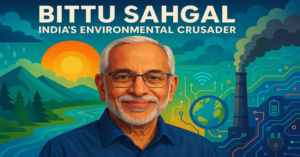Latest News
My latest ramblings.
Enjoy! I definitely got important things to say
My latest ramblings.
Enjoy! I definitely got important things to say

And Why We Must Answer Before It Stops,You’re breathing the ocean right now.Half the oxygen filling your lungs was gifted by invisible phytoplankton – Sylvia Earle “tiny angels of the sea.” This is her truth: We are ocean. And we’re killing our own life support system.
Sylvia Alice Earle, age 3, stands ankle-deep in a New Jersey tide pool. A horseshoe crab brushes her foot.
“Don’t touch!” her mother cries.
But tiny fingers gently trace its ancient shell – 450 million years of evolution meeting wide-eyed wonder. She tucks a pearlescent clamshell into her pinafore pocket. It will sit on her desk 86 years later, whispering: “Remember me?”
When Sylvia’s family moves to Florida, the Gulf becomes her cathedral. She learns its language:
One summer, oil from passing tankers coats “her” fiddler crabs. She scrubs them with toothbrushes, tears mixing with saltwater. First blood in a lifelong war.
1964. Sylvia, 29, balances on a research vessel’s edge. Below: 100 feet of crushing blackness. Male colleagues mutter: “Women distract underwater missions.”
She plunges.
The silence hits first. Then colors no painter could replicate: neon nudibranchs, psychedelic corals. A curious parrotfish nibbles her glove. “This,” she realizes, “is where I belong.”
1970. She applies for Tektite II – an underwater habitat project. Rejected. Official reason: “An all-female team would be… problematic.”
Unofficial reason? Sexism in a wetsuit.
One year later. Sylvia leads Tektite II’s first all-female aquanaut team. For two weeks, 50 feet deep, they become ocean.
“We cooked seaweed pasta, measured fish migrations, proved women bleed saltwater same as men.”
January 19, 1979. Sylvia straps into a 1,000-pound JIM suit – a “tin can for one.” Cables detach. She free-falls into midnight.
1,250 feet down, her headlamp catches something:
“I wept inside that helmet. We were colonizing a world we didn’t understand.”
Sylvia, age 73, steps onstage. 1,000 faces expect inspiration. She delivers a eulogy:
“We’ve eaten 90% of the big fish… bleached half the corals… turned the sea into a soup of plastic and grief.”
Silence. Then:
“My wish? Help me protect the blue heart of our planet through Hope Spots – sanctuaries where life can heal.”
Two years later: Fish swarm like silver tornadoes. The fisherwoman names her daughter “Sylvia.”

She leans over the rail near Svalbard. A glacier calves – a sound like God cracking knuckles.
“This ice held ancient air bubbles. Now it’s releasing centuries of our sins.”
Each night, she fills a vial with meltwater. “Evidence,” she tells scientists. But crewmembers see her whisper to it: “Forgive us.”
“People say, ‘But salmon is healthy!’ So is a bullet to the head if you care about life.”
2018. A senator serves lobster at a conservation dinner. Sylvia pushes it away: “These are the cockroaches of the sea? No. They’re poets who mate for life. I’ll have salad.”
Sylvia’s secret? “Stop ‘saving the ocean.’ Start loving it.”
#HopeSpot nominee map shows vulnerable waters near you.Sylvia knows her time is finite. Her legacy lives in:
“When I die, scatter my ashes where the Atlantic meets the Arctic. Then dive. Look for the shimmer. That’s me dancing with the bioluminescence. That’s you remembering: We are the ocean. And it’s not too late to come home.”
“NO BLUE, NO GREEN.
NO OCEAN, NO US.
NO EXCUSES.”
— Sylvia Earle, age 89
#HopeSpot Twitter communityThis isn’t content. It’s a lifeline thrown across generations. Grab hold.

Ranthambhore, 1978. Moonlight silvered the chital’s back. Beneath a banyan tree, 31-year-old Bittu Sahgal held his breath as a tigress emerged—muscles rippling like liquid gold. Her amber eyes locked onto his. Time stopped.
Then, a whimper.
Two cubs tumbled from the shadows, nuzzling her belly. As they vanished into the dhok forest, Bittu wept silently. Not for beauty alone, but for the crushing truth:
“We’re murdering this miracle for concrete.”
That night, the chartered accountant died. The warrior was born.
├─ Prologue: The Tiger’s Tears
│ └─ 1978 Ranthambhore, tigress and cubs, Bittu’s transformation
├─ I. Roots: When the Mountains Called
│ ├─ Childhood asthma, Shimla summers
│ ├─ Bombay greyness, bird books, Sanjay Gandhi Park
│ └─ 1975: quits CA firm over pollution
├─ II. Apprenticeship: Gurus of the Green
│ ├─ Salim Ali: listening to forests
│ ├─ Kailash Sankhala: protect rivers for tigers
│ └─ Fateh Singh Rathore: confronts Bittu’s complacency
├─ III. Ink-Stained Revolt: Birth of Sanctuary
│ ├─ 1981: Sanctuary Asia launch with ₹5,000
│ ├─ Exposes illegal sand mining; faces threats
│ └─ Radical storytelling with photos, letters, tribal voices
├─ IV. The Children’s Army
│ ├─ Kids for Tigers: teaching by showing
│ ├─ Impact: halted malls, Tiger Rangolis, forest festivals
│ └─ Saving tigers = saving ourselves (Priya’s words)
├─ V. Warriors of the Mud
│ ├─ Funding grassroots heroes (Taukeer, Laxmi)
│ └─ COCOON Conservancies: farms → forests, earning from ecology
├─ VI. The Relentless Fights
│ ├─ Koyna Dam (1994): stopped flooding forest, faced threats
│ └─ Timber Mafia (2007): undercover exposé, car firebombed
├─ VII. The Unbreakable Philosophy
│ ├─ “We are cells, not owners”
│ ├─ Development = severed arteries
│ ├─ Hope in children naming spiders
│ └─ Sacrifice: 18-year wait for holiday, honeymoon in Kanha
├─ VIII. Passing the Torch
│ ├─ Daughter Tara: editor, lessons on saving fishermen
│ └─ Current warriors: Rohit (wetlands), Lalita (plastic-free villages)
├─ Epilogue: How to Mend a World
│ ├─ 2023 Kaziranga: Bittu passes the lantern
│ └─ Legacy: citizens demand clean rivers, wildlife corridors, tiger’s roar
└─ Postscript: The Whisper in Your Ear
├─ Sparrow → Laxmi’s village
├─ Children laughing → Priya’s Rangoli
└─ Monsoon cloud → Salim Ali’s birdsong
Young Bittu’s asthma made him an “indoor child” in 1950s Mumbai. Salvation came in Shimla’s pine-scented summers:
“Grandfather would point at deodars: ‘These trees breathe for us. Respect them.’”
But Bombay’s greyness awaited. At St. Xavier’s College, he escaped into Salim Ali’s bird books. When classmates chased stockbroker dreams, Bittu bicycled to Sanjay Gandhi National Park, sketching hornbills.
The Breaking Point: 1975. Trapped in a CA firm auditing textile mills, he watched dyes poison the Mithi River. One morning, he snapped—threw files into a monsoon gutter.
“My boss screamed, ‘Madman!’ I whispered, ‘Finally sane.’”
Ali taught him to listen:
“That drongo’s alarm? A leopard’s near. Forests speak if you learn their grammar.”
Together, they documented the silent collapse of Bharatpur’s wetlands.
Sankhala, smoking bidis in Ranthambhore, schooled him brutally:
“You journalists cry over dead tigers. I cry over living ones starving in fragmented forests!”
He burned into Bittu: “Protect rivers, tigers follow.”
Ranthambhore’s legend shattered his complacency:
“You city babu! Write pretty articles while poachers eat my tigers? Go fight or jao!”
That night, Bittu vomited beside a campfire—shame and resolve churning together.

1981. Mumbai’s monsoon lashed his Borivali garage. With ₹5,000 (his wife’s jewelry money), a typewriter, and donated paper, Sanctuary Asia gasped to life.
First Crisis: Issue #1 exposed a politician’s illegal sand mining. A thug arrived:
“Stop or lose your fingers.”
Bittu reprinted the article with the threat verbatim. Sales soared.
Tribal trackers became co-authors. Poachers’ confessions ran unedited. When advertisers fled, readers sent ₹10 notes wrapped in neem leaves.
2000. Delhi’s smog-choked Laxman Public School. Bittu didn’t lecture. He showed:
Impact Beyond Data:
“We’re not saving tigers,” confessed 12-year-old Priya. “We’re saving us.”
Bittu’s masterstroke—funding grassroots heroes rejected by “NGO English”:
“Bittu saab gave me binoculars, not pity. Now I train 73 bird guides in Uttarakhand.”
“Men laughed when I joined forest patrols. Bittu published my photo. Now they ask me for jobs.”
Failed Maharashtra farms became living labs:
Officials planned to flood 14,000 acres of Western Ghats forest. Bittu mobilized:
In Assam, he went undercover as a tea buyer. His exposé revealed:
“They Burn Truth. We Plant More.”
Over sweet chai in his Mumbai home, parrots quarreling on the balcony, Bittu shares his core:
“They call highways ‘progress’. I call them arteries severed.”
“Every time a child names a spider, a forest grows in their mind.”
“My wife waited 18 years for a ‘proper’ holiday. We honeymooned in Kanha—tracking pugmarks.”
His daughter Tara, now Sanctuary’s editor, recalls:
“Papa taught me constellations during power cuts… ‘Don’t save dolphins,’ he said. ‘Save fishermen who save dolphins.’”
Kaziranga, 2023. Monsoon fog hugs elephant grass. At 76, Bittu watches a rhino calf stumble up. A young guard whispers:
“Sir, your magazine saved this park.”
Bittu smiles:
“No. You did. I just passed the lantern.”
His True Legacy:
As dusk falls, a child runs up with a rhino sketch. Bittu smiles. The relay has begun.
Next time you see:
For in these fragments lives the world Bittu Sahgal refused to surrender.
Picture this: a woman in a vibrant sari kneels in rich soil, her hands cradling a handful of rice seeds like precious jewels. Around her, a tapestry of life unfolds – buzzing insects, rustling leaves, the distant laughter of children. This is Vandana Shiva revolution, and it grows not from tractors or test tubes, but from the ancient wisdom of the earth itself. Her journey from quantum physics labs to the heart of India’s farmlands reveals a truth we’ve forgotten: our survival is woven into the threads of biodiversity.
├── Introduction
│ └── Imagery of Vandana Shiva in the soil
│ └── Her revolution: ancient wisdom vs. industrial agriculture
│ └── Central theme: biodiversity and survival
├── When the Mountains Spoke
│ └── Childhood influences
│ ├── Father’s forest walks
│ └── Mother’s lessons from Partition
│ └── Witnessing the impacts of the Green Revolution
│ ├── Farmer suicides
│ └── Environmental degradation
├── The Seed Keepers’ Rebellion
│ └── Founding of Navdanya
│ └── Farmer response: seeds shared freely
│ └── Key Initiatives
│ ├── Seed Banks as Living Libraries
│ ├── Underground Seed Network
│ └── Women as Biodiversity Warriors
├
── Why Women Hold the Earth’s Memory
│ └── Ecofeminism and interconnectedness
│ └── Real-life Examples
│ ├── Neem Tree Patent Battle
│ ├── Myth of Agribusiness Feeding the World
│ └── Women’s Role in Food Sovereignty
├── Rain in the Time of Drought
│ └── Resilient farming at Navdanya
│ └── Solutions and Innovations
│ ├── Seed Freedom Festivals
│ ├── Farmer-led Seed Networks
│ └── Soil Regeneration Practices
├── The Quiet Revolution Growing Under Our Feet
│ └── Shiva’s response to critics
│ └── Living Legacy
│ ├── Indian farmers reclaiming diversity
│ ├── Seed networks expanding in Africa
│ └── Culinary revival in global cities
├── Conclusion
│ └── Mustard seed as metaphor
│ └── Core message: Diversity = Abundance
│ └── Final quote and call to awareness
Shiva’s story begins where the Himalayan air tastes like pine needles and possibility. “As a child,” she recalls, “my father would take me walking through the forests, teaching me that every tree had a story, every root a purpose.” Her mother, displaced during India’s violent partition, carried a different wisdom: “She showed me how soil remembers kindness, how seeds hold memories of generations.”
These lessons became her compass when industrial agriculture’s shadow fell across Punjab – India’s breadbasket. What she witnessed would change her path forever: “Farmers who once sang to their crops were now drinking pesticides to end their lives. Rivers that nourished civilizations were poisoned. The Green Revolution wasn’t green at all – it was the colour of despair.”
It started with a simple act of defiance. In 1991, Shiva founded Navdanya (“Nine Seeds”) on a scrap of land in Dehradun. Word spread among farmers: “There’s a madwoman giving away seeds for free.” What began as a whisper grew into a roar.
Shiva’s genius lies in seeing what others miss: the inseparable bond between ecological destruction and the silencing of women’s wisdom. “Walk through any Indian village,” she insists, “and you’ll see it – women saving seeds in skirt hems, reading weather in birds’ flight, growing thirty crops where men plant one cash crop.”
Her ecofeminism isn’t theory – it’s survival:
I remember standing with Shiva at Navdanya during a scorching April. While neighboring fields cracked like broken pottery, her demonstration farm breathed moisture. “See?” She plunged her hand into cool soil. “Diversity creates its own microclimate. These trees are whispering to the clouds.”
Her solutions feel like nature’s own poetry:
Critics call her anti-progress. Shiva just smiles: “They think ‘scaling up’ means endless monocultures. But life doesn’t scale up – it scales out. One saved seed becomes a million. One woman’s knowledge lights a thousand minds.”
As dusk falls at Navdanya, fireflies mirror the stars. Shiva picks up a single mustard seed. “This,” she whispers, “contains universes. It holds the memory of every monsoon that nourished it, every hand that saved it, every meal it will become. This is technology perfected over millennia.”
Perhaps her greatest lesson is this:
In a world obsessed with growth, true abundance lies in diversity. In an age of disconnection, revolution begins when your hands touch the earth.
As farmers across India sing while planting, “Every seed is a promise whispered to the future.”
And Vandana Shiva taught us to listen.

Look, trying to pin down Elon Musk and his impact on our planet’s future feels like trying to wrestle smoke. One minute he’s unveiling an electric truck that looks ripped from a sci-fi nightmare (and somehow works), and the next he’s tweeting something that makes your jaw hit the floor. Indeed, he builds spaceships to make us multiplanetary while his private jet crisscrosses the sky, leaving a contrail of carbon and cognitive dissonance.
This isn’t a neat story. It’s not a hero’s journey or a villain’s plot. Rather, it’s the chaotic, relentless, often infuriating saga of a single human being applying immense force to the levers of technology, trying desperately to bend our trajectory away from disaster. And love him or hate him, you can feel the tremors.
Most tech CEOs talk about “changing the world” while optimizing ad clicks. Musk? He operates on a different scale. He doesn’t disrupt industries; instead, he bulldozes them and starts pouring new foundations based on brutal, beautiful physics.
Remember feeling vaguely guilty about your gas car, but thinking EVs were glorified golf carts? Then Tesla happened. It wasn’t just a car. It was a statement. Suddenly, an electric car wasn’t just acceptable; it was coveted. That shift? That gut-level desire he injected into sustainability? That’s human alchemy. He didn’t just sell cars; he sold belief – the belief that saving the planet didn’t mean sacrificing joy.
Moreover, the Superchargers? Pure genius, born of understanding human anxiety. So he didn’t lobby governments; he just built the damn network himself. It felt less like a business move, more like someone saying, “Fine, if the world won’t build the future, I will.”
It’s the Powerwall humming quietly in your garage. That feeling during a storm-induced blackout when your lights stay on, powered by the sun that hit your roof yesterday. It’s independence. It’s quiet defiance against a fragile grid. Tesla Energy made “home battery” a thing people wanted, not just eco-warriors, but anyone who hated losing power.
Furthermore, it’s the Megapack banks silently displacing belching, fossil-fueled “peaker” plants. It’s knowing that when the grid strains under a heatwave, massive batteries – born from the same tech in your car – are kicking in, smooth and clean. That’s systemic change, felt in the stability of the lights staying on for millions.
Walk into Giga Berlin or Texas. The scale hits you first – a sheer, almost incomprehensible bigness. Sunlight streams through vast skylights onto factory floors buzzing with a strange ballet of humans and robots. The “Giga Press” isn’t just a machine; it’s a geological force, roaring as it stamps out a car’s underbody in one terrifying, beautiful crush of molten aluminum. Fewer parts. Less waste. Lighter weight. It’s manufacturing reimagined not just for profit, but for efficiency at planetary scale.
But you also hear the other stories. The relentless pace. The pressure cooker environment. The arguments over safety, over unions. This is the human friction point. Can you build a sustainable future sustainably for the people building it? That tension hangs thick in the air, unresolved. Indeed, it’s a stark reminder: the path forward isn’t clean or easy. It demands sweat, sacrifice, and constant, uncomfortable negotiation about what kind of future we’re willing to build.

Then there’s SpaceX. The sheer, heart-stopping spectacle of a rocket booster screaming back to Earth and landing perfectly upright never gets old. It feels… impossible. And yet, there it is. That reusability? It’s not just cool tech; it’s a fundamental rejection of waste.
Also, those thousands of Starlink satellites? Yes, astronomers curse them. And crucially, they, and constellations they enabled, are our planet’s new nervous system. They track deforestation in real-time, pinpoint methane leaks (that invisible climate killer), and measure sea-level rise with terrifying precision. That data is our lifeline – the unflinching truth we need to fight the climate fight. Musk made getting that truth cheaper. That matters.
Regarding the Mars thing? Look, it sounds bonkers. But scratch the surface, and it’s driven by a raw, human fear: putting all our eggs in one fragile basket. Building a backup. The technologies needed for a self-sustaining Mars colony – closed-loop air, water, food, energy – are the exact technologies we desperately need to master here to live sustainably. It forces us to think in cycles, not lines. It’s ambition turned into a forcing function for Earth-bound sustainability. Crazy? Maybe. But it makes you think differently about our place in the universe.
Let’s not look away:
Honestly? Wrestling with it.
Elon Musk isn’t building us a gleaming, perfect utopia. He’s a flawed, brilliant, exhausting, contradictory force of nature, swinging a sledgehammer at the walls of what we thought was possible. He’s pouring immense human capital, genius, and capital into forging tangible tools for survival: better batteries, smarter grids, reusable rockets, electric everything.
It’s messy. It’s often ugly. It’s fraught with ethical landmines and personal hypocrisy. He infuriates as much as he inspires.
But feel the ground shake. The cost of batteries plummeted. Electric cars are normal. Massive batteries are stabilizing grids powered by sun and wind. Rockets do land themselves, slashing the cost of watching our fragile planet.
He hasn’t solved it. Not by a long shot. The path ahead is brutal, uncertain, and demands so much more than technology alone. But he grabbed the wheel of history and yanked it hard towards a future that might just work. He made the impossible feel… probable. Maybe even inevitable.
His legacy on sustainability won’t be a statue. It’ll be the hum of the electric motor in your driveway, the resilience of your lights staying on during a storm, the data from space helping us understand our wounded planet, and the restless, uncomfortable feeling that we have to move faster.
He’s the flawed titan, covered in the soot and sparks of progress, hammering relentlessly at the future. And like it or not, that future is being shaped by every blow he lands. The question isn’t really about him anymore. It’s about what we do with the tools, the urgency, and the messy, complicated momentum he’s unleashed. The fire is lit. Now it’s up to us not to get burned, but to build something lasting from the heat.

Rain slicked the Stockholm pavement that August morning in 2018. Greta Thunberg—all 15 years and 80 pounds of her—sat hunched under a too-thin jacket, her hand-painted “Skolstrejk för klimatet” sign propped against bony knees. Office workers hurried past, barely glancing at the slight figure who should’ve been in math class.
You know that moment when you’re so tired of waiting for adults to do something that you just… sit down? That’s where it began for Greta. Not with a roar, but with a quiet thud—a backpack hitting the pavement outside Sweden’s parliament on a drizzly August morning in 2018. She was 15. Her sign, hand-painted with “Skolstrejk för klimatet” (“School Strike for Climate”), wobbled against her knees. Passersby glanced. Some shrugged. Just another kid, they probably thought.
Her parents certainly did. “Go to school,” they’d urged. But Greta had stopped eating months earlier, haunted by climate reports she’d read at age 8. The numbers didn’t add up: How could the world be ending, and everyone just… carry on? Diagnosed with Asperger’s and OCD, she later called it her “superpower”: “I see the world in black and white. And when it comes to survival, there are no grey areas.”
Her opera-singer mother Malena had begged: “Greta, this isn’t your battle.”
Her actor father Svante warned: “You’ll get in trouble.”
But Greta’s Asperger’s brain couldn’t unsee the numbers: 420 gigatons left in our carbon budget. 42.5 gigatons emitted yearly. Do the math.
“I either do this,” she told them quietly, “or I disappear inside my sadness forever.”

Before the braids became iconic, Greta was just an 8-year-old weeping over polar bear documentaries. By 11, the dissonance between climate science and adult inaction literally starved her:
Scene: 2016
Greta slams IPCC reports on the table: “You’re stealing my future.”
Malena sighs: “Sweetheart, we recycle—”
“Recycling won’t reverse permafrost melt! Look!” She stabs at methane emission charts.
“Was it hard?” a reporter later asked.
Svante smiled tiredly: “Watching your child fade away is harder.”
The miracle wasn’t Greta striking—it was who saw her first:
By Week 3, photographers circled Greta like seabirds. She hid behind her sign, texting her sister: “Too many eyes. Hurts.”
A Finnish banker tweeted: “This kid’s braver than our parliament.”
“Do you have media training?” a BBC host asked.
Greta’s flat stare said everything: “I have science.”
For every iconic speech, there were private struggles:
Her superpower? Radical honesty:
And her quiet kindness:
That first week, she sat alone. A security guard brought her thermos of soup. A journalist snapped a photo. Then something cracked open.
Teens in Germany saw her Instagram post. Kids in Australia shared it. By week three, a handful joined her. By September, hundreds across Europe were ditching class on Fridays. Greta seemed baffled: “I shouldn’t be here. I should be back in school, across the ocean.” But there she was—a reluctant icon in worn sneakers, her braids tucked under a beanie.
Beyond the 4 million strikers:
The invisible shift: Climate grief became legitimate. Therapists now recognize “pre-traumatic stress” in Gen Z.
2023: Lützerath, Germany
Greta sits in coal mine mud, rain plastering hair to her face. Riot police loom.
Journalist: “Why risk arrest?”
Greta: “The real crime is down there.” She points at excavators tearing up ancestral farmland for lignite.
“I hate conflict,” she admits. “But silence is violence now.”
Today, at 21:
Her greatest fear?
“Not that we fail. That people will say: ‘Greta tried’ while coasting toward collapse.”
Pointing at Chilean teens who forced a green constitution.
“They didn’t need me. They saw what power they had.”
“People ask: ‘Did you change the world?’ No. I sat down. The world saw its own reflection in my sign—and flinched.”
— Greta Thunberg, 2024
Today, at 22, Greta’s still restless. She studies maps not of college campuses, but oil pipelines. She knows the movement’s messy. “Some Fridays, 10 people show up. That’s okay,” she says.
Her real legacy? Making “climate” human. Before Greta, it was graphs and doom-scrolling. Now, it’s:
A 12-year-old in Kenya planting trees because “Greta did something.”
Grandparents writing to her: “You woke me up.”
That knot in your stomach when you skip a plastic bag—because someone sat down in the rain and refused to move.
“People keep asking: ‘What’s your hope?’ I don’t want your hope. I want you to panic. Then act.”
— Greta Thunberg, 2019
Sometimes changing the world begins with a backpack, a sign, and the stubborn refusal to stand up.
This isn’t a superhero story. It’s about a girl whose body trembled but whose conscience wouldn’t. Who still cries before speeches. Whose greatest legacy might be making millions ask: “If she can sit in the rain for my future… what’s my excuse for standing still?”
The fire she lit? It wasn’t in parliaments. It was in the human heart—that stubborn, inconvenient place where hope outlives reason.
The Tennessee air hangs thick with honeysuckle and memory. At his family farm near Carthage, 77-year-old AI Gore walks the same fields he plowed as a boy, his hand brushing against stalks of corn taller than he remembers. “Soil remembers,” he murmurs to an old oak. “We’re just borrowing this.” This isn’t the polished orator of global summits. This is Albert Gore Jr.—son, father, grandfather—whose lifelong battle for the planet began not in boardrooms, but in the quiet ache of watching bulldozers strip hillsides bare after his father lost a Senate race.
Gore’s resolve wasn’t born in congressional halls. It was forged in private grief:
These scars fuel his urgency. When critics mock his “doomsaying,” they miss the man who still chokes up recalling polar bears in An Inconvenient Truth. “People called it manipulation,” he sighs. “But I cried editing that scene. Because we did that.”
He knows the caricature: Saint Al, the wooden prophet. So he leans into his flaws with disarming candor:
This vulnerability disarms skeptics. When a young activist confronted him in 2022 (“Your carbon footprint!”), Gore didn’t deflect. He pulled up real-time data: solar-powered homes, electric vehicles, offsets for flights. “I’m not perfect. But I’m trying. Are you?”
Beyond the spotlight, Gore’s genius lives in quiet moments:
| Tactic | When Used | Impact |
|---|---|---|
| Vulnerability | Facing youth activists | Builds trust; disarms hostility |
| Relentless Listening | Frontline communities | Shapes Climate TRACE priorities |
| Dad Humor | Tense negotiations | Releases pressure; builds rapport |
| Silent Stare | Corporate greenwashers | Creates accountability without words |
Gore’s true north isn’t data—it’s his 8 grandchildren.
This intimacy shapes his mission. Climate TRACE’s landfill sensors? Inspired by his grandson’s asthma near a Memphis dump. His fiery defense of democracy? “Because Maxine deserves to vote,” he says of his 12-year-old granddaughter.
His harshest critics disarmed by his candor. Even climate denier Marc Morano concedes: “Al owns his stumbles. Wish my side did.”
Yet he persists. Why? “Ran into a kid last week,” he smiles. “Said my movie made her a scientist. That’s the antidote.”
At the farm, Gore watches grandchildren chase fireflies—their laughter echoing his own childhood summers. Inside, draft speeches litter the table. One line stands circled: “Democracy isn’t a monument. It’s a garden—tended daily or lost.”
He steps onto the porch, feeling the humid kiss of a changing climate. The fireflies flicker like dying stars. “They’re vanishing,” his granddaughter whispers. Gore pulls her close. “Then we fight harder.”
In this quiet, you see the man behind the movement:
As fireworks color the valley red, white, and blue, he whispers words that anchor his humanity:
“We don’t need perfect heroes. We need imperfect people who refuse to quit. Who plant trees whose shade they’ll never feel. Who fight because giving up is a luxury love can’t afford.”
The fireflies blink on. So does he.